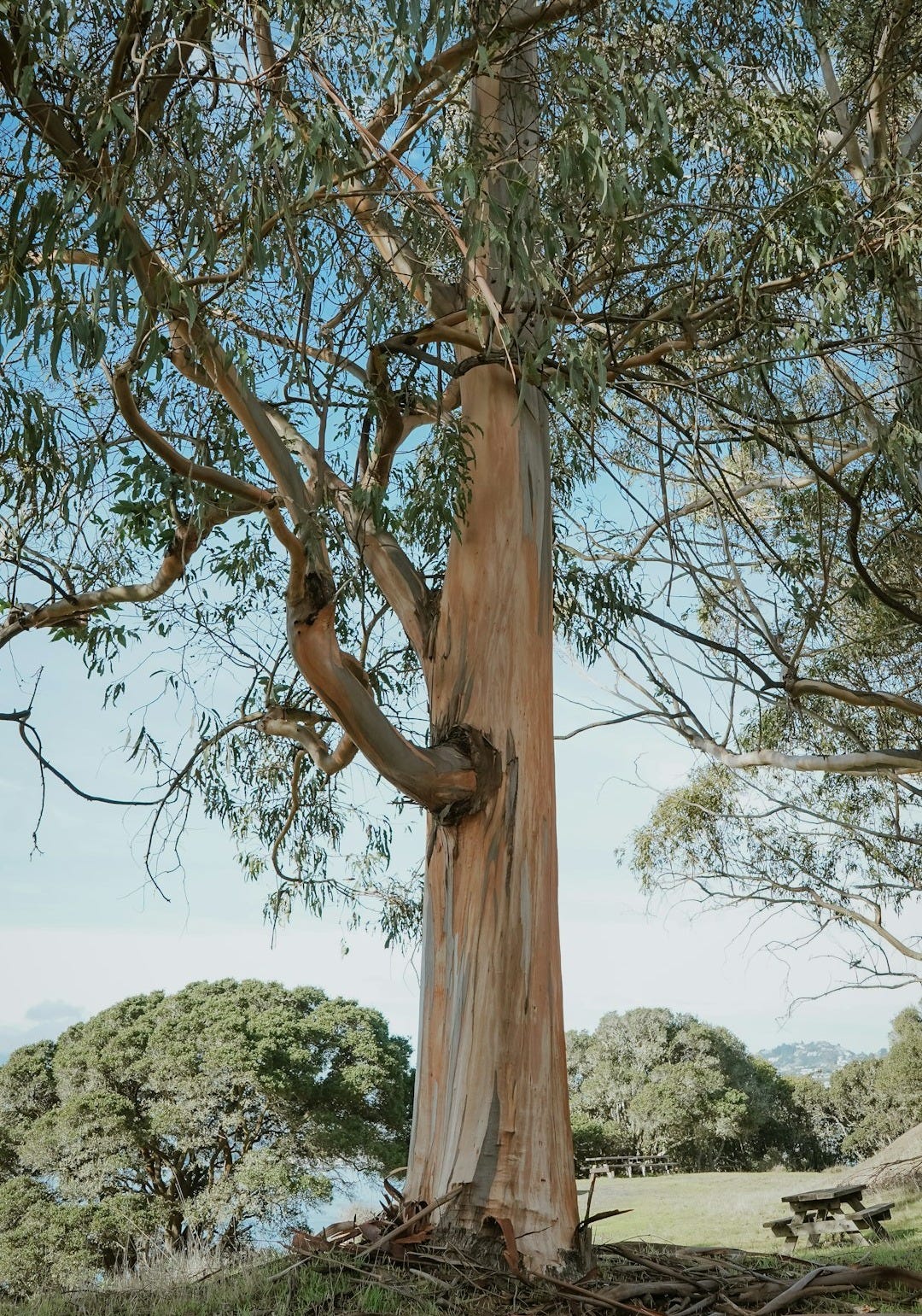Eucalyptus Trees Planted by Settlers are Fueling California’s Wildfires
How a highly flammable, dry, oily, invasive, and non-indigenous species of tree created a colossal mess for California to fix
If you’ve ever hiked in California, you’ve likely encountered at least one eucalyptus tree. Reaching heights of more than 100 feet, the Tasmanian blue gum eucalyptus is hard to miss. It has a very distinct smell and look.
However, these non-indigenous trees worsen the fire threat for many reasons. They shed bark that dries out quickly, easily catches the wind, and can blow miles away, leading to rapid fire spread. They’re also very oily, and they create fuel. The oil is regularly used as incense or in fragrance, but it makes the eucalyptus tree highly flammable in fire.

How did we end up here?
During the Gold Rush, Australians were amongst some of the people who came to California. At the time, California lacked trees… it was a grassy, marshy, and mostly scrubby landscape. Settlers “needed” wood for building every city, moving things around, and energy. They were also used to forests and felt like California’s landscape was incomplete (lol, the audacity).
Within a couple of years, little eucalyptus trees grown from seed could be found in every nursery in San Francisco. Despite the poor soil, they grew fast, reaching four to six feet in height annually, serving as windbreakers.
When the problems began…
A few decades later, Californians weren’t as impressed. The trees were terrible for woodworking as they would split and crack, making it a lousy railroad option. They also drained wells that people relied on.
Skipping forward, in the early 20th century, U.S. Forest Service officials voiced concerns about a looming timber famine. They predicted the hardwood supply would dwindle in the next 15 years, which was a big issue for them. Investors saw the opportunity to sell eucalyptus for hardwood even though they failed to analyze the bad reviews farmers had left about eucalyptus trees.
They planted thousands of acres of eucalyptus trees around California to sell in true American capitalist fashion.
The timber famine never happened because we used the trees in the eastern U.S. forests. Imports, like steel and mahogany, also offset the need. They were not worth cutting down. Most of the eucalyptus trees you see today are century-old abandoned crops.
Eucalyptus and California fires….
Back in 1991, the East Bay firestorm left 25 people dead and thousands homeless while loads of eucalyptus burned. It’s believed that is when people started correlating eucalyptus trees to more intense wildfires.
However, after federal funding to cut down trees in the East Bay Hills was passed, protestors got naked and hugged eucalyptus trees on Cal Berkeley's campus. The naked protestors were ultimately unable to stop the trees from being cut down. Still, even that is a drop in a vast bucket when you consider the number of these invasive trees across California.
How screwed are we?
An estimated 40,000 acres of unharvested eucalyptus trees are planted across California, waiting to burn. Cutting down a tree can require a crane, cost thousands of dollars, and continue to resprout. They’re classified as a “moderate” invasive plant and are here to stay. It's possible that they won't receive enough water to reproduce in the following decades, but that would mean California is in a bad drought. It can also adapt to the weather, so who knows if that would happen.
These trees are very flammable, rampant across California, tough to eliminate, and non-indigenous to the California geography.
What’s the solution?
Landback. We need indigenous people to take over their lands and teach us how to take care of it, nurture it, and make it less prone to wildfires. Indigenous Americans, Alaska Natives, and Native Hawaiians used fire to manage the land for a variety of uses called “cultural burning.”
Indigenous peoples have used fire to steward the land in California for thousands of years. This practice, passed down through generations, benefits both the land and the people. It improves soil quality, encourages the growth of certain plant species, and cultivates a healthy landscape.
Cultural burning stopped in the 20th century due to the land management agency's enforcement of “differing” practices. Over the past few decades, the government has tried to adopt cultural burning again, but it’s America, and it hates acting promptly or adequately. They don’t do it nearly as much as they should, if at all.
I’d argue that the only people qualified to take on the task of minimizing wildfire harm are the indigenous peoples, period. That’s not up for debate. We need preventative care, not emergency response. People’s livelihood depends on it.
In conclusion…
The legacy of eucalyptus trees planted by settlers has left California in a challenging situation. Their highly flammable nature has worsened the state's wildfire crisis. Though once thought to be a solution for timber shortages, these trees have become a dangerous invasive species, spreading across the landscape and fueling deadly fires.
Given the increasing threat of wildfires, the best solution is to revitalize traditional Indigenous land stewardship methods, especially cultural burning, which has historically helped manage the land and lower fire dangers. We must acknowledge Indigenous peoples' insights and support their leadership in restoring the land and safeguarding California’s future.



*applause* Wonderful breakdown of this issue Ari. Knocked it outta the park 🖤✊🏻
The disregard for indigenous voices is insane. Good job calling it out!